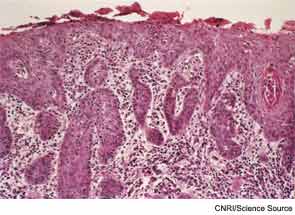A natural outgrowth of the decades-long movement toward evidence-based medicine is an increased focus on the assessment of physician performance in applying the best evidence to diagnose and treat a patient with a specific condition. To this end, quality of care measures are being developed for specific conditions within most specialties to guide physicians and assess their performance in implementing the best care based on the most up-to-date evidence.
Two current initiatives offer otolaryngologists a way to join the growing ranks of physicians in other specialties who are using quality measures to assess their performance. In 2008, the American Head and Neck Society (AHNS) launched quality of care measures for oral cavity cancer. In February 2013, the American Board of Otolaryngology (ABOto) rolled out a Performance Improvement Module (PIM) on oral cavity cancer that uses the AHNS quality measures. The PIM is one component of Part IV of the Maintenance of Certificattion (MOC) program offered by ABOto.
“The aim of both initiatives is to provide feedback to otolaryngologists on their strengths as well as on areas that need improvement in diagnosing and treating patients with oral cavity cancers,” said Robert H. Miller, MD, executive director of ABOto and physician editor of ENTtoday, who hopes physicians will participate in the initiatives in the spirit in which they were developed, not as a stick but as a carrot to encourage participation to improve performance and, ultimately, patient outcomes.
Oral Cavity Cancer Quality Care Measures
The oral cavity cancer quality care measures developed by the AHNS include quality measures in three areas: pre-treatment, treatment and post-treatment. Key pre-treatment measures are the need for pathologic confirmation of disease, appropriate TNM staging documentation and tobacco cessation counseling. Key treatment measures are radiation oncology referral for all patients with advanced T stage or metastatic lymph node disease, and referral to a medical oncologist and a radiation oncologist for all patients with positive pathologic margins or metastatic lymph nodes showing extracapsular extension. Key post-treatment measures are the need for follow-up visits for symptom management and for recurrence and second primary tumor
surveillance, and assessment of serum thyroid stimulating hormone level within 12 months for patients treated with radiation therapy to the neck to detect hypothyroidism.
According to Amy Chen, professor of head and neck surgery at Atlanta’s Emory University, who chaired the AHNS multidisciplinary committee that developed the quality measures, oral cavity cancer was the first disease to be chosen to develop these measures because the committee wanted to pick a condition that is commonly seen by otolaryngologists and is a surgical condition handled by members of the AHNS on a daily basis.

Leave a Reply